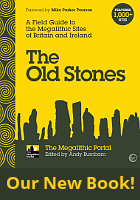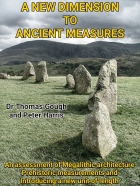<< News >> Chariot proves Iron Age links with Europe
Submitted by vicky on Thursday, 25 September 2003 Page Views: 2374
Iron Age and Later PrehistoryArchaeologists studying an ancient chariot burial have found evidence that Iron Age Scots had far closer ties with Europe than previously thought. Experts examining the unprecedented find at Newbridge, west of Edinburgh, have proved it is the oldest chariot in the UK and uncovered great similarities between the vehicle and associated burial rites found on the Continent, indicating a close familiarity with mainland European practices.Dr Stephen Carter, director of Headland Archaeology of Edinburgh, and Fraser Hunter of the department of archaeology at the National Museums of Scotland, also confirmed many more chariot burials may be dotted around Scotland. The Newbridge find, which has been described as the "Ferrari of the Iron Age", is the first chariot burial to be found in Britain outside of East Yorkshire and has been carbon-dated to around 570-370 BC.
Dr Carter said: "We are stressing the continental connection because the Yorkshire burial rites were significantly different. There, they dismantled the chariot and placed the person in or under the body of the vehicle. In the Newbridge burial, the rite was identical to the ones carried out in Belgium and France, where the complete vehicle was buried.
He explained the significance of the discovery, which could transform historians' view of Iron Age Britons.
"Scotland is often seen as being at the fringe of Iron Age Europe, cut off from the mainstream. This evidence reminds us that there were great connections between Scotland and Europe in prehistory, especially by sea," Dr Carter said.
The Celtic chariot, or cart, was unearthed at a building site close to the M8 in Edinburgh in 2001. It is in a condition never seen before in the UK, with its metal fittings intact after thousands of years.
Excavations showed wheels 0.8 metres in diameter, an axle of 1.4 metres, and a pole extending from the axle measuring three metres, although the wooden chassis has disintegrated.
The lack of distinctive European suspension fittings indicates that the Newbridge chariot is a British vehicle and not an import. Work on the chariot has shown that Scotland at the time was a fully integral part of the Celtic culture dominant in north-west Europe.
Another Celtic discovery a human skull found in Lancashire in 1958 has been reconstructed to reveal the face of a young man sacrificed to the gods almost 2000 years ago.
Forty-five years after the severed head was found in Worsley Moss, Dr John Prag, archaeologist of the Manchester Museum, and Caroline Wilkinson, a facial anthropologist, reconstructed the battered skull to reveal the features of a strong, young victim.
Dr Prag said the finished face fits the profile of classic bog sacrifices. "He was just the sort of man you would choose the best you could offer the gods."
Source: The Herald 25/09/2003






 We would like to know more about this location. Please feel free to add a brief description and any relevant information in your own language.
We would like to know more about this location. Please feel free to add a brief description and any relevant information in your own language. Wir möchten mehr über diese Stätte erfahren. Bitte zögern Sie nicht, eine kurze Beschreibung und relevante Informationen in Deutsch hinzuzufügen.
Wir möchten mehr über diese Stätte erfahren. Bitte zögern Sie nicht, eine kurze Beschreibung und relevante Informationen in Deutsch hinzuzufügen. Nous aimerions en savoir encore un peu sur les lieux. S'il vous plaît n'hesitez pas à ajouter une courte description et tous les renseignements pertinents dans votre propre langue.
Nous aimerions en savoir encore un peu sur les lieux. S'il vous plaît n'hesitez pas à ajouter une courte description et tous les renseignements pertinents dans votre propre langue. Quisieramos informarnos un poco más de las lugares. No dude en añadir una breve descripción y otros datos relevantes en su propio idioma.
Quisieramos informarnos un poco más de las lugares. No dude en añadir una breve descripción y otros datos relevantes en su propio idioma.